Indoor Succulents Care 101
Succulents Can Make a Design Statement—And More
By Staff | Story and photos by Jenna Matecki | Winter 2017 | Features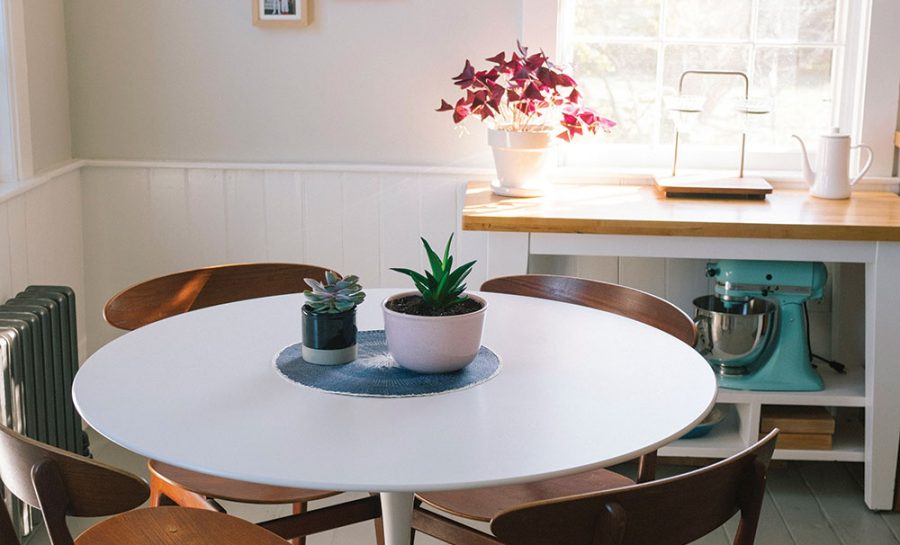
Succulents are heroes in the plant world. They can live in harsh conditions—usually deserts—by storing water in their leaves, roots, or stems. Their extreme adaptability demonstrates what is quite possibly the greatest resolve to live of any plants. Plus, succulents are so aesthetically intriguing, and offer so many physical and psychological benefits to humans, that they have become a trendsetter for homeowners and decorators.
And yet these complicated plants can be quite confusing. How much care do succulents require? How often do they need to be watered? How do you choose from among succulents’ varied and striking forms, and incorporate these plants successfully into a room’s design?
Defining succulents
The category “succulent” can be applied to thousands of plants. Popular desert plants like the Cacti family, along with the species Aloe and Crassula (jade), all fit under the broad succulent classification. Though succulents are native to arid regions like the Southwest, the West Coast, and Mexico, their adaptability also helps them thrive indoors.
As houseplants, succulents are trending as bestsellers in garden shops. But their popularity is not only due to the fact that they are low maintenance and hard to kill. Their bold, sculptural forms make them the go-to plants for interior designers. Succulents add unusual textures, idiosyncratic and sometimes rugged beauty, and even fractal geometry to a room. They can be used to complement a woody décor or soften the look of a room containing sharp, modern furnishings or lots of digital devices. And along with their arresting, dramatic appearance, succulents seem to have more character than your average houseplant. They show us what resilience looks like—both indoors and, surprisingly, even outside our Hudson Valley homes.
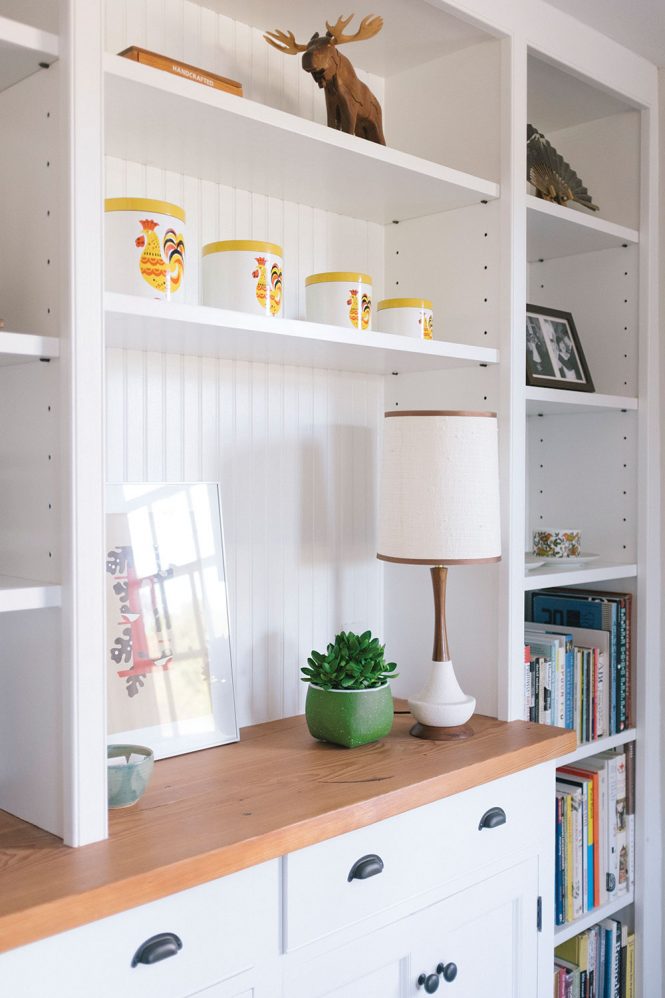
A bright green jade plant in a matching container pops with color amid predominantly white furnishings.
The aesthetics of succulents
Wherever succulents grow, they contribute a natural tone to the ambiance of a space, as demonstrated by Victory Farmhouse in Jeffersonville. This country house, built in 1847, was recently renovated by Tiffany Bernardo and Ed Nacional, designers and founders of the housewares store Victory Home Goods. Victory Farmhouse doubles as Red Cottage rental and a showroom and model house for Victory Home Goods’ products, showcasing Bernardo and Nacional’s personally designed housewares and original artwork.
Designing with succulents means taking into account their textures, sculptural attributes, colors, and placement. At Victory Farmhouse, attention-grabbing succulents grow in virtually every room, juxtaposed against sleek midcentury modern vintage pieces, custom furniture by Jacob Rauch, handcrafted flatware, and fine linens.
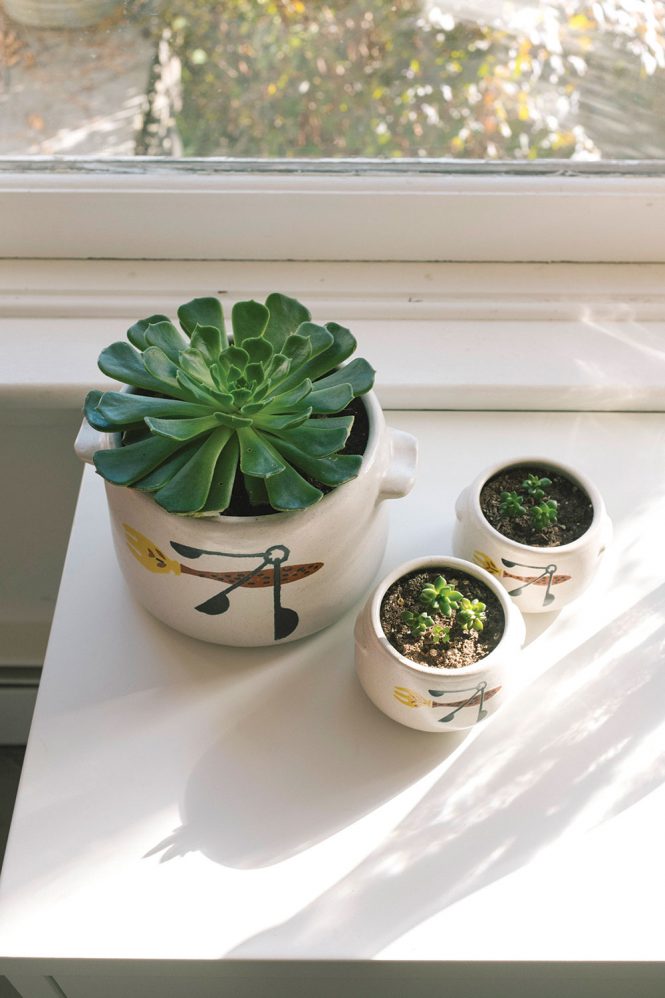
Many species of succulents offer striking fractal geometry.
Balancing a dramatic succulent, its container, and the surrounding space can create a natural yet orderly ambiance. To achieve this balance at Victory Farmhouse, Bernardo and Nacional have potted their succulents in vintage and contemporary pots made of ceramic or metal. “We love using vintage patterned or illustrated bowls as planters,” says Bernardo. These punchy containers complete each succulent’s bold statement, while also keeping with the house’s midcentury modern feel.
Bernardo and Nacional have situated each potted succulent at eye level or table height to allow its details to be fully appreciated. In this way, the textures and colors of the plants stand out amid their surroundings. For example, an aloe plant’s dark green stalks contrast dramatically with a smooth, pale pink ceramic bowl placed on a circular, indigo mat; and a jade plant with a square branch cluster, potted in a round container, sits on a nightstand next to a white lamp whose ovate base and square shade mirror the plant’s silhouette. Such small but impactful choices can harmonize an interior through contextualization, color coordination, and symmetry.
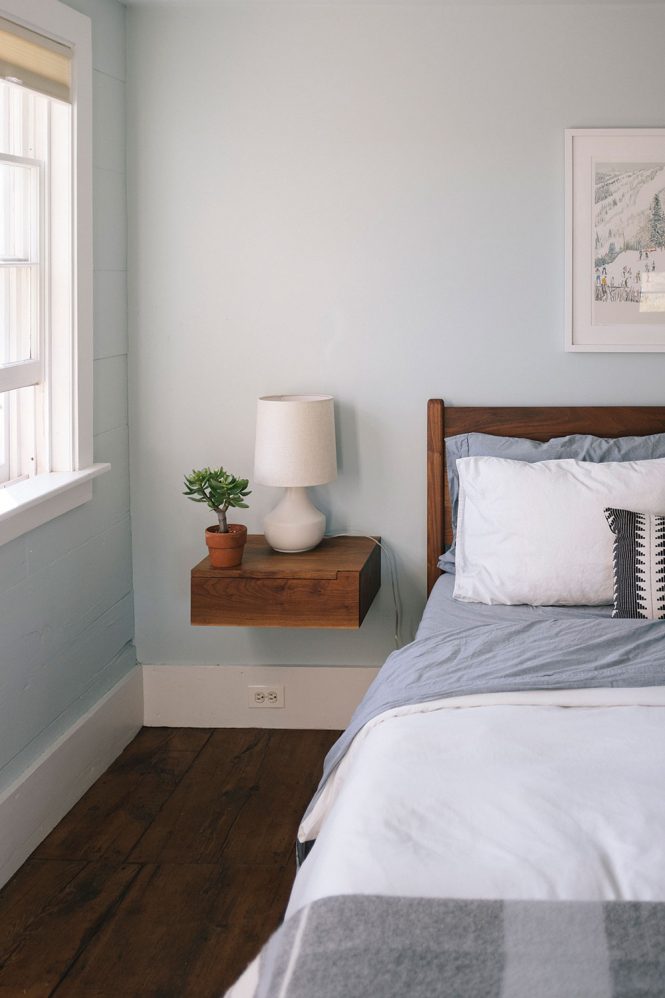
A location with plenty of natural light and no direct heat source can keep succulents happy.
Plants with benefits
Life is always better with houseplants. A 2009 article in the Journal of Environmental Psychology, “The Psychological Benefits of Indoor Plants,” cites 21 scientific experiments on the effects of indoor plants on overall psychological health. According to the majority of the studies, people benefit in many ways from growing greenery indoors. In seven of the experiments, participants consistently rated rooms containing plants as more attractive, pleasant, or comfortable than rooms without plants. In three studies, participants’ stress and anxiety levels were lower when they were in the presence of plants; and in three other experiments, participants even experienced higher pain tolerance with plants nearby.
Some succulents even offer physical benefits. For instance, aloes actively purify the air. They also contain a sweetly scented gel in their stalks that is easily absorbed into the skin and can be used to heal sunburns and insect bites, control facial oil, and moisturize the skin. Cactus gel can be applied to hair after washing. It’s high in amino acids and iron, both of which are essential for hair growth, and contains double the amount of fatty acid, fiber, and protein as the popular haircare product Argan oil.
Caring for Indoor Succulents
Ready to welcome some succulents into your home? A few commonly known genera are sold as houseplants: Haworthia, Crassula, Senecio, Echeveria, Aloe, and Kalanchoe. Identifying the differences between these plants can be tricky, as plants within the same genera can look wildly different from each other. For example, a Senecio rowleyanus resembles a string of tiny green pearls, but a Senecio radicans has leaves shaped like bananas.
To keep it simple, most succulent experts and sellers use the species’ common names rather than Latin-based botanical nomenclature. Mary Fris, owner of Flora Garden and Home in Beacon, who says she has sold thousands of succulents as houseplants, recommends several plants with fun names, all suitable for beginners: Donkey’s Tail is a collection of braided, trailing stems; Peanut Cactus is shaped like a finger with spines; and Old Man’s Cactus is a single stem with modified spines that look like white hairs. Fris has one simple rule when it comes to caring for succulents: “They don’t like wet feet.”
Caring for any plant is all about controlling its light, water, soil, and location. For succulents, the more natural light and the less water, the better. Fris advises setting up two recurring calendar reminders for succulents: one for watering, and another for changing the soil. She also recommends placing succulents away from heat sources in the winter months—“Just as it isn’t good for humans to be near heaters 24/7, it isn’t good for plants,” she says—and emphasizes the importance of monitoring the soil by touch: If the soil is moist, don’t water it. Succulents, she notes, enjoy neglect.
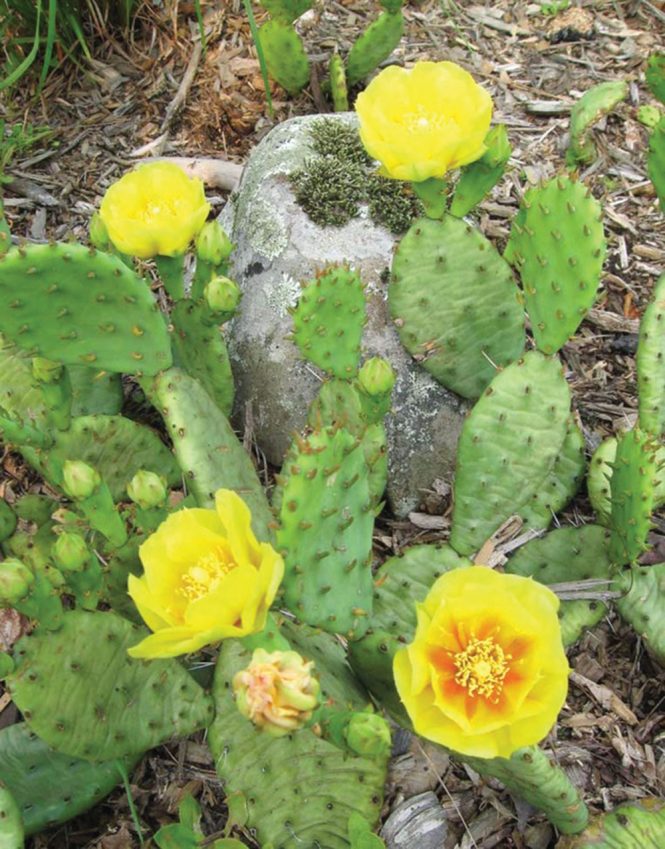
The Eastern Prickly Pear can thrive outdoors in the Hudson Valley, as well as inside.
For ambitious gardeners, succulents are some of the easiest plants to propagate. Depending on the type of plant, propagating it can be as straightforward as breaking off a leaf or a stalk and letting it dry out, which provokes new root growth as the plant searches for water and nutrients, before planting it in a new container. Succulents can also be grown from seeds, but that requires a lot of patience, since seedlings can take from six months to a year to grow a single inch.
For Hudson Valley homeowners with a green thumb, succulents can be addictive—so much so that growing them indoors may not be enough. Want to declare your love of succulents to the outside world by gracing your front yard or deck with them year-round? Surprisingly, there is actually one succulent that’s native to Ulster County.
Francis Groeters, PhD, who cofounded Catskills Native Nursery in Kerhonkson in 1999, is an expert on the Hudson Valley’s native plants. For outdoor succulent growing, he recommends the Opuntia humifusa, or Eastern Prickly Pear cactus. Simply plant this cactus in a spot that gets full sun and good drainage, he advises, and then leave it alone. The plant blooms bright yellow flowers in the summer and produces edible fruits in fall, which are said to contain anti-inflammatory, antioxidant, and anti-aging properties. This resplendent, adaptable, and resilient plant can help turn a house into a home. Not only can it live year after year outdoors, even through especially cold winters, but it can also be grown indoors in a container garden, making it fit for both expert and novice plant owners. Just beware, as you fall in love with the Eastern Prickly Pear, of its spikes.
